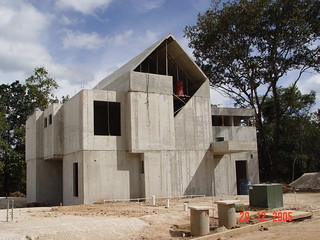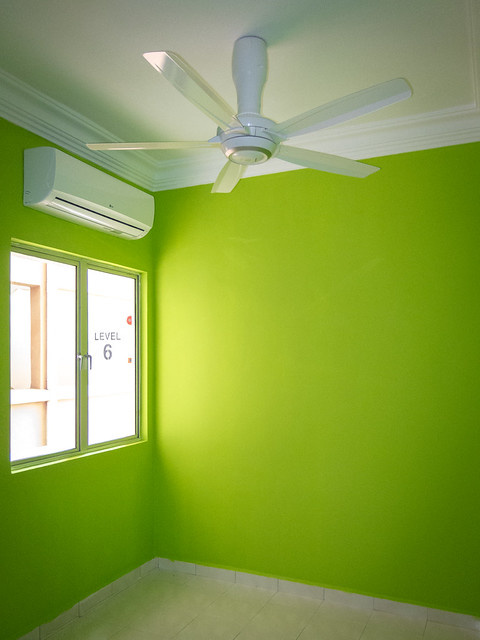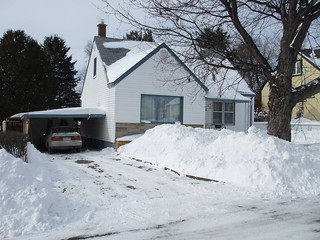Three Calgary-area entrepreneurs say they’ve invented a device that
will trap greenhouse gas emissions produced by home furnaces, bringing
the battle against global warming to the suburbs.
The irony of Albertans opening a new front in the war on GHGs isn’t
lost on the trio behind CleanO2 Carbon Capture Technologies — the
province’s oil and gas industry is usually blamed for Canada’s inability
to meet GHG reduction targets.
They just installed their first full-scale prototype in the utility room of partner Jaeson Cardiff’s Airdrie bungalow.
“There is no other company doing carbon capture from the residential market. Nobody,” said Cardiff in an interview.
“It’s very complex. It comes back to the notion of rather than
dealing with a large quantity of CO2 at a single source, you’re dealing
with a bunch of CO2 spread out over a wide area. The average home
produces six tonnes (per year). The city of Calgary census from 2012
showed 245,000 homes so that’s 1.5 million tonnes of CO2 and that’s just
the single detached homes.”
Cardiff, a plumber with a knack for inventing, came up with the
concept of home carbon capture eight years ago while brainstorming
ideas for a science magazine invention contest.
He brought in his boss, Scott Forgrave, owner of Calgary plumbing and
heating company Excelair Mechanical Services Ltd., and Kathi Fischer, a
chemical technologist, and they got to work.
The prototype, a thin polished black box with blue lights that
perches next to the furnace like an extra water softener, is designed to
come on automatically when the furnace kicks in. Many of its parts were
made using a 3D printer picked up on eBay.
High-efficiency furnaces create carbonate ions and carbonic acid, the
company says. The CleanO2 machine — dubbed CARBiNX — circulates cold
air from outside through a heat exchanger to cool the fumes to make it
easier to dissolve the carbon dioxide with an atomized solvent spray.
The solvent — they won’t say what it is, other than to emphasize it’s
non-toxic — is then circulated through polystyrene resin beads which
strip off the carbonate ions so the liquid is ready to be used again.
The bead cartridge can be switched out when it is full.
Jim Wilson, intellectual property manager for Innovate
Calgary, said the technology is at a very early stage and many questions
remain to be answered but its potential for small- to medium-scale
carbon capture is promising.
“The uniqueness is the scale and the simplicity,” he said.
“I think there are a number of steps to do before this can go out at
scale and be a profitable business, but it’s a direction that everyone
is interested in and everyone is looking at.”
Innovate Calgary helped CleanO2 review existing carbon
capture technology and file a patent on the technology in the United
States, the latter partly funded by Alberta Innovates Technology
Futures.
Earlier this month, the federal government pledged to cut greenhouse gas
emissions by about one-third to an estimated 515 metric megatons per
year by 2030. Emissions were 726 megatons in 2013, the most recent year
for which data is available, and Environment Canada figures show
they are projected to increase 727 megatons by 2020.
Early testing suggests the CleanO2 device can capture 30 per cent of
the carbon dioxide from a typical residential furnace — that’s about two
tonnes per year. One of the key questions is what you then do with the
carbonate, with options including consolidating it for recycling,
sending it to a landfill or flushing it down the drain to be collected
at a municipal sewage treatment facility.
CleanO2 says it needs to raise about $500,000 to secure patents,
finish testing the prototype, file for certification and begin
manufacturing. Once the money is in hand, the partners estimate a
product could be on the market in a year or so.
“We need to find investment so we can take it to the next
level, which is industrial,” said Cardiff. “We also believe there is a
niche market with people with more disposable income. We could market
this as a high-end green product you can put in your home.”
Fischer added that furnace manufacturers may be interested in
licensing some of the technology to incorporate into their products.
Forgrave pointed out that high-efficiency furnaces are mandated by
the federal government — if CleanO2’s product works as hoped, it could
also be backed by government through legislation or subsidy. He said
that’s something Alberta’s new NDP government might also be interested
in backing.
The partners estimate the prototype cost about $10,000 to build but
with mass production the cost could fall to $450 to $500 per unit, about
the same as a water softener.
See More :
http://calgaryherald.com/business/energy/calgary-inventors-create-device-to-trap-greenhouse-gases-from-home-furnaces





